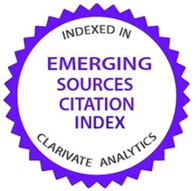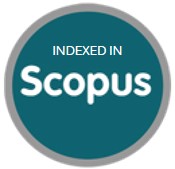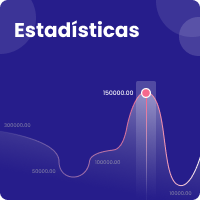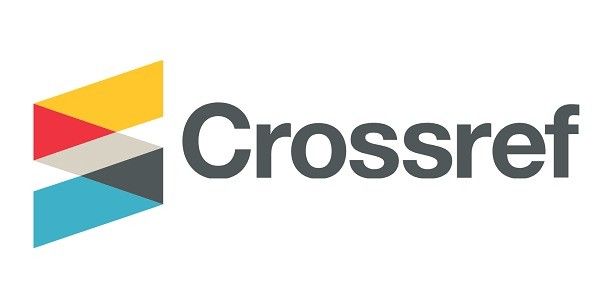La ampliación del Canal de Panamá
Un cambio de juego fallido para el tráfico portuario de los puertos de transbordo
DOI:
https://doi.org/10.21830/19006586.1016Palabras clave:
Contenedores, canales, puertos, Canal de Panamá, rendimiento de contenedores, puertos de transbordoResumen
El Canal de Panamá ha jugado un papel importante en la historia de la industria naviera. Por lo tanto, era razonable prever que su expansión repercutiría en el rendimiento portuario en los seis puertos de transbordo ubicados en Panamá. Para examinar este impacto, se analizaron dos períodos. El primero abarcó desde octubre de 2010 hasta junio de 2016. El segundo abarcó desde julio de 2016 hasta marzo de 2022. Se utilizó la prueba de rangos con signo de Wilcoxon y el software SPSS para analizar los datos de la Comisión Centroamericana de Transporte Marítimo (COCATRAM). La investigación concluyó que la ampliación del Canal de Panamá no ha producido un impacto estadísticamente significativo en el rendimiento portuario de (a) tonelaje de carga, (b) carga contenerizada y (c) arribo de buques.
Descargas
Referencias bibliográficas
Açik, A. (2019). Volatility Spillover from Global Container Freight Indices to Port Throughputs in Turkey. International Journal of Economics and Innovation, 5(1), 101–113. https://doi.org/10.20979/UEYD.519545
Alarcón, F., Ashley, B., de Hanily, S., Molenaar, R. & Ungo, R. (2011). Risk Planning and Management for the Panama Canal Expansion Program. Journal of Construction Engineering and Management, 137(10), 762–771. https://doi.org/10.1061/(ASCE)CO.1943-7862.0000317
Alvarez, H., Solis, D., Cano, A., Rabelo, L. & Sala, S. (2009). The system dynamics simulation of the expansion of the Panama Canal. International Journal of Technology, Policy and Management, 9(1), 17–28. https://doi.org/10.1504/IJTPM.2009.022842
Bae, M., Chew, E., Lee, L. & Zhang, A. (2013). Container transshipment and port competition. Maritime Policy & Management, 40, 479–494. https://doi.org/10.1080/03088839.2013.797120
Bellsola, X., Daamen, W., Vellinga, T. & Hoogendoorn, S. (2018). State-of-the-art of port simulation models for risk and capacity assessment based on the vessel navigational behaviour through the nautical infrastructure. Journal of Traffic and Transportation Engineering (English Edition), 5(5), 335–347. https://doi.org/10.1016/j.jtte.2018.03.003
Bhadury, J. (2016). Panama Canal expansion and its impact on East and Gulf coast ports of U.S.A. Maritime Policy and Management, 43(8), 928–944. https://doi.org/10.1080/03088839.2016.1213439
Bonney, J. (2016, June 25). Panama Canal expansion will affect shipping — but how? Journal of Commerce Online. https://www.joc.com/port-news/panama-canal-news/panama-canal-expansion-will-affect-shipping-how_20160625.html
Bussolo, M., De Hoyos, R. & Medvedev, D. (2012). Distributional Effects of the Panama Canal Expansion [with Comment]. Economía, 13(1), 79–129. https://www.jstor.org/stable/41756783
CDS. (2014). Panama Ports Company will invest 86 million euros to expand the port of Balboa. Cadena de Suministro (CDS). https://www.cadenadesuministro.es/noticias/panama-ports-company-invertira-86-millones-de-euros-en-ampliar-el-puerto-de-balboa/
Changkeun, P., Richardson, H. & Park, J. (2020). Widening the Panama Canal and U.S. ports: historical and economic impact analyses. Maritime Policy and Management, 47(3), 419–433. https://doi.org/10.1080/03088839.2020.1721583
Chao, S. & Yu, H. (2012). Repositioning empty containers in East and North China ports. Maritime Economics & Logistics, 14, 435–454. https://doi.org/10.1057/mel.2012.15
Chen, G., Cheung, W., Chu, S. & Xu, L. (2017). Transshipment hub selection from a shipper’s and freight forwarder’s perspective. Expert Systems with Applications, 83, 396–404. https://doi.org/10.1016/j.eswa.2017.04.044
Chou, C. (2007). A fuzzy MCDM method for solving marine transshipment container port selection problems. Applied Mathematics and Computation, 86(1), 435–444. https://doi.org/10.1016/j.amc.2006.07.125
Chou, C. (2009). A model for analyzing the transshipment competition relationship between the port of Hong Kong and the port of Kaohsiung. Journal of Ocean University of China, 8(4), 377–384. https://doi.org/10.1007/S11802-009-0377-1
Martius, C., Kretschmann, L., Zacharias, M. et al. (2022). Forecasting worldwide empty container availability with machine learning techniques. Journal of Shipping and Trade, 7(1), 1–19. https://doi.org/10.1186/s41072-022-00120-x
COCATRAM. (2022a). Central America Maritime and Port Statistical Information System (SIEMPCA). Central American Commission for Maritime Transportation. http://www.cocatram.org.ni/estadisticas/cuadro7/
COCATRAM. (2022b). Glossary. Central America Maritime and Port Statistical Information System (SIEMPCA). http://www.cocatram.org.ni/estadisticas/glosario_en/
COCATRAM. (2022c). Vessels Arrival by Quarter. Central America Maritime and Port Statistical Information System (SIEMPCA). http://www.cocatram.org.ni/estadisticas/cuadro2/
Corbett, J. J., Deans, E., Silberman, J., Morehouse, E., Craft, E.& Norsworthy, M. (2012). Panama Canal expansion: Emission changes from possible US west coast modal shift. Carbon Management, 3(6), 569–588. https://doi.org/10.4155/CMT.12.65
Corey, J., Wang, Q., Zhen, J., Sun, Y., Du, H. & Zhu, Z. (2022). Container transshipment via a regional hub port: A case of the Caribbean Sea region. Ocean & Coastal Management, 217(105999). https://doi.org/10.1016/j.ocecoaman.2021.105999
Danyluk, M. (2019). Fungible Space: Competition and Volatility in the Global Logistics Network. International Journal of Urban and Regional Research, 43(1), 94–111. https://doi.org/10.1111/1468-2427.12675
Edmonds, J. (2012). Panama Canal: “Game Change” Depends on Who Provides the Best “Playing Fields.” Economic Development Journal, 11(2), 42–47. https://www.iedconline.org/index.php?submenu=EconomicDevelopmentJournalArchive&src=pages&ref=economic-development-journal-archive
Feng, H., Grifoll, M., Yang, Z., Zheng, P. & Mallofre, A. (2020). Visualization of container throughput evolution of the Yangtze River Delta multi-port system: the ternary diagram method. Transportation Research Part E: Logistics and Transportation Review, 142(102039), 1–15. https://doi.org/10.1016/j.tre.2020.102039
FRENADESO. (2006). Análisis Crítico de la Engañosa Propuesta de la ACP y del Gobierno del PRD. https://ia904500.us.archive.org/18/items/AnalisisCriticoDeLaPropuestaDeAmpliacinDelCanal/Analisis critico de la Propuesta de Ampliacin del canal.pdf
Fung, M. (2002). Forecasting Hong Kong’s container throughput: an error-correction model. Journal of Forecasting, 21, 69–80. https://doi.org/10.1002/for.818
Gökkuş, U., Yıldırım, M. & Aydin, M. (2017). Estimation of Container Traffic at Seaports by Using Several Soft Computing Methods: A Case of Turkish Seaports. Discrete Dynamics in Nature and Society, 2984853, 1–15. https://doi.org/10.1155/2017/2984853
Gonzalez, C. (2008). Environmental Impact Assessment in Postcolonial Societies: Reflections on the Proposed Expansion of the Panama Canal. Tennessee Journal of Law & Policy, 4(2), 303–354. https://digitalcommons.law.seattleu.edu/faculty/155/
Gosasang, V., Chandraprakaikul, W. & Kiattisin, S. (2011). A Comparison of Traditional and Neural Networks Forecasting Techniques for Container Throughput at Bangkok Port. The Asian Journal of Shipping and Logistics, 27(3), 463–482. https://doi.org/10.1016/S2092-5212(11)80022-2
Gourdin, K. (2019). The tumultuous world of global maritime transportation: a cautionary tale for supply chain managers. Journal of Transportation Management, 29(2), 23–35. https://doi.org/10.22237/jotm/1572566580
Grifoll, M. (2019). A statistical forecasting model applied to container throughput in a multi-port gateway system: The Barcelona-Tarragona-Valencia case. International Journal of Shipping and Transport Logistics, 11(4), 316–333. https://doi.org/10.1504/IJSTL.2019.100453
Hassel, E., Meersman, H., Voorde, E. & Vanelslander, T. (2020). The impact of the expanded Panama Canal on port range choice for cargo flows from the U.S. to Europe. Maritime Policy & Management. https://doi.org/10.1080/03088839.2020.1718230
Hayes, A. (2021). Wilcoxon Test. Investopedia. https://www.investopedia.com/terms/w/wilcoxon-test.asp
Herrera, M., Agrell, P., Peñate, C. & Trujillo, L. (2017). Vessel capacity restrictions in the fleet deployment problem: an application to the Panama Canal. Annals of Operations Research, 253(2), 845–869. https://doi.org/10.1007/S10479-016-2262-9
Hricko, A. (2012). Progress and Pollution: Port cities prepare for the Panama Canal expansion. Environmental Health Perspectives, 120(12), 471–473. https://doi.org/10.1289/EHP.120-A470
Huang, A., Liu, X., Rao, C., Zhang, Y. & He, Y. (2022). A New Container Throughput Forecasting Paradigm under COVID-19. Sustainability, 14(2990), 1–20. https://doi.org/10.3390/su14052990
Hui-Huang, T. (2015). A comparative study on pollutant emissions and hub-port selection in Panama Canal expansion. Maritime Economics and Logistics, 17(2), 163–178. https://doi.org/10.1057/MEL.2014.15
ICC. (2022). Container ships. International Chamber of Shipping. https://www.ics-shipping.org/explaining/ships-ops/container-ships/
Jagerman, D. & Altiok, T. (2003). Vessel Arrival Process and Queueing in Marine Ports Handling Bulk Materials. Queueing Systems, 45, 223–243. https://doi.org/10.1023/A:1027324618360
Jha, B. (2022). What are Container Ships – History, Types And Design. Marine Insight. https://www.marineinsight.com/types-of-ships/what-are-container-ships/
Jiménez, P., Gómez, J.& Pavón, P. (2021). HADES: A Multi-Agent Platform to Reduce Congestion Anchoring Based on Temporal Coordination of Vessel Arrivals—Application to the Multi-Client Liquid Bulk Terminal in the Port of Cartagena (Spain). Applied Science, 11(7), 1–16. https://doi.org/10.3390/app11073109
Kadaifci, C., Asam, U., Serdarazan, S. & Aricam, U. (2018). A new rule-based integrated decision making approach to container transshipment terminal selection. Maritime Policy & Management, 46(2), 237–256. https://doi.org/10.1080/03088839.2018.1489149
Kavirathna, C., Kawasaki, T. & Hanaoka, S. (2018). Transshipment Hub Port Competitiveness of the Port of Colombo against the Major Southeast Asian Hub Ports. The Asian Journal of Shipping and Logistics, 34(2), 71–82. https://doi.org/10.1016/J.AJSL.2018.06.004
Kelly, T. & Arai, M. (2009). A genetic algorithm for the hub-and-spoke problem applied to containerized cargo transport. Journal of Marine Science and Technology Volume, 14, 256–274. https://doi.org/10.1007/s00773-008-0035-0
Knatz, G. (2017). How competition is driving change in port governance, strategic decision-making and government policy in the United States. Research in Transportation Business and Management, 22, 67–77. https://doi.org/10.1016/J.RTBM.2016.08.003
Koza, D. F., Desaulniers, G.& Ropke, S. (2020). Integrated liner shipping network design and scheduling. Transportation Science, 54(2), 512–533. https://doi.org/10.1287/TRSC.2018.0888
Kwan, A. & Hilmola, O. (2012). Future of transshipment in Singapore. Industrial Management & Data Systems, 112(7), 1085–1100. https://doi.org/10.1108/02635571211255032
Lam, L. & Iskounen, A. (2010). Feeder ports, Inland ports and Corridors–Time for a closer look. HTG Yearbook 2010, 19–23. https://portek.com/publications/FeederPort_InlandPortsandCorridors_TimeforaCloserLook.pdf
Langen, P. (2003). Forecasting Container Throughput: A Method and Implications. Journal of International Logistics and Trade, 1(1), 29–39. https://www.ejilt.org/download/download_pdf?pid=jilt-1-1-29
Linares, F.& Rovi, J. (2020). An interview with Morgan & Morgan discussing shipping in Panama. Lexology. https://www.lexology.com/library/detail.aspx?g=3ce3bc4a-e09d-44d4-a269-25457f82ac54
Lirn, T., Thanopoulou, H. & Beresford, A. (2003). Transhipment Port Selection and Decision-making Behaviour: Analysing the Taiwanese Case. International Journal of Logistics Research and Applications, 6(4), 229–244. https://doi.org/10.1080/13675560310001626990
Liu, L. & Park, G. (2011). Empirical analysis of influence factors to container throughput in Korea and China ports. Asian Journal of Shipping and Logistics, 27(2), 279–303. https://doi.org/10.1016/S2092-5212(11)80013-1
Liu, Q., Wilson, W. & Luo, M. (2016). The impact of Panama Canal expansion on the container-shipping market: a cooperative game theory approach. Maritime Policy and Management, 43(2), 209–221. https://doi.org/10.1080/03088839.2015.1131863
Longaray, A., Gomes, C., Elacoste, T.& Machado, C. (2019). Efficiency Indicators to Evaluate Services in Port Services: A Proposal using Fuzzy-AHP Approach. Pesquisa Operacional, 39(3), 437–456. https://doi.org/10.1590/0101-7438.2019.039.03.0437
Mãdãlin, C. A. (2012). Structural Implications of Economic Crisis on Container Throughput. Evidences from Port of Constanta. Ovidius University Annals, Economic Sciences Series, 12(1), 34–40. https://ideas.repec.org/a/ovi/oviste/vxiiy2012i12p34-40.html
Mann, C. G. (2011). National security or special interests? US support for the panama canal expansion programmes. Global Society, 25(2), 181–204. https://doi.org/10.1080/13600826.2011.553529
Martinez, C., Steven, A. B. & Dresner, M. (2016). East Coast vs. West Coast: The impact of the Panama Canal’s expansion on the routing of Asian imports into the United States. Transportation Research Part E: Logistics and Transportation Review, Part E 91, 274–289. https://doi.org/10.1016/J.TRE.2016.04.012
McCalla, R. (2008). Site and Situation Factors in Transshipment Ports: The Case of The Caribbean Basin. Tijdschrift Voor Economische En Sociale Geografie, 99(4), 440–453. https://doi.org/10.1111/J.1467-9663.2008.00476.X
McCalla, R. (2008). Container transshipment at Kingston, Jamaica. Journal of Transport Geography, 16(3), 182–190. https://doi.org/10.1016/j.jtrangeo.2007.05.006
Medda, F. & Carbonaro, G. (2007). Growth of container seaborne traffic in the mediterranean basin: Outlook and policy implications for port development. Transport Reviews, 27(5), 573–587. https://doi.org/10.1080/01441640701322677
Medina, J., Kim, H. & Lee, E. (2021). Did the Panama Canal expansion benefit small U.S. ports? Maritime Transport Research, 2(100013), 1–9. https://doi.org/10.1016/J.MARTRA.2021.100013
Medina, J., Kim, H. & Lee, E. (2020). A preliminary analysis of U.S. import volumes and regional effects associated with the Panama Canal expansion. Research in Transportation Economics, 84(100969). https://doi.org/10.1016/J.RETREC.2020.100969
Miller, K.& Hyodo, T. (2021). Impact of the Panama Canal expansion on Latin American and Caribbean ports: difference in difference (DID) method. Journal of Shipping and Trade, 6(1), 1–23. https://doi.org/10.1186/S41072-021-00091-5
Min, H.& Park, B. (2011). The selection of transshipment ports using a hybrid data envelopment analysis/analytic hierarchy process. Journal of Transportation Management, 22(1), 5. https://doi.org/10.22237/jotm/1301616240
Muirhead, R., Minton, S., Miller, A. & Ruiz, M. (2015). Projected effects of the Panama Canal expansion on shipping traffic and biological invasions. Diversity and Distributions, 21(1), 75–87. https://doi.org/10.1111/DDI.12260
Mulligan, F.& Lombardo, A. (2016). Panama Canal expansion: fuel economy and logistical risk. WMU Journal of Maritime Affairs, 15(1), 5–15. https://doi.org/10.1007/S13437-014-0069-6
Ng, K. (2006). Assessing the Attractiveness of Ports in the North European Container Transhipment Market: An Agenda for Future Research in Port Competition. Maritime Economics & Logistics, 8, 234–250. https://doi.org/10.1057/palgrave.mel.9100158
Niérat, P. & Guerrero, D. (2019). UNCTAD maritime connectivity indicators: review, critique and proposal. UNCTAD Transport and Trade Facilitation Newsletter N°84. https://unctad.org/news/unctad-maritime-connectivity-indicators-review-critique-and-proposal
Notteboom, E., Parola, F.& Satta, G. (2019). The relationship between transhipment incidence and throughput volatility in North European and Mediterranean container ports. Journal of Transport Geography, 74, 371–381. https://doi.org/10.1016/J.JTRANGEO.2019.01.002
Paflioti, P., Vitsounis, K., Teye, C., Bell, H. & Tsamourgelis, I. (2017). Box dynamics: A sectoral approach to analyse containerized port throughput interdependencies. Transportation Research Part A: Policy and Practice, 106, 396–413. https://doi.org/10.1016/J.TRA.2017.08.001
Pagano, A., Wang, G., Sánchez, O., Ungo, R. & Tapiero, E. (2016). The impact of the Panama Canal expansion on Panama’s maritime cluster. Maritime Policy and Management, 43(2), 164–178. https://doi.org/10.1080/03088839.2016.1140241
Panamá América. (2013). Las inversiones que provoca la ampliación del Canal de Panamá. Central America Data. https://www.centralamericadata.com/es/article/home/Las_inversiones_que_provoca_la_ampliacin_del_Canal_de_Panam
Park, C.& Park, J. (2016). Panama canal expansion, U.S. trade diversion from west coast seaports and urban innovation. Journal of Open Innovation: Technology, Market, and Complexity, 2(12), 1–15. https://doi.org/10.1186/S40852-016-0040-1
Park, J., & Seo, Y. (2016). The impact of seaports on the regional economies in South Korea: Panel evidence from the augmented Solow model. Transportation Research Part E: Logistics and Transportation Review, 85, 107–119. https://doi.org/10.1016/J.TRE.2015.11.009
PCA. (2006). Panama Announces Expansion. Canal de Panamá. https://pancanal.com/en/panama-announces-expansion/
PCA. (2022). Six years after the expansion of the Canal. Panama Canal Authority. https://pancanal.com/es/aniversario-seis-ampliacion-del-canal/
Petrlić, A. & Pavletić, N. (2019). Benchmarking analysis of factors influencing container traffic in the Port of Rijeka. Multidisciplinary Scientific Journal of Maritime Research, 33(2), 119–129. https://doi.org/10.31217/P.33.2.1
Pham, Y., Kim, Y. & Yeo, T. (2018). The Panama Canal expansion and its impact on East-West liner shipping route selection. Sustainability (Switzerland), 10(12). https://doi.org/10.3390/SU10124353
ProConnect. (2022). The Cargo, Tonnage & Port Dues: A Complete Explanation of What You Need to Know. ProConnect Logistics. https://proconnectlogistics.com/blog/the-cargo-tonnage-port-dues-a-complete-explanation-of-what-you-need-to-know/#:~:text=What Is Tonnage%3F-,Tonnage refers to the total weight of cargo shipped at,spares%2C ship’s equipment and crew.
Ragheb, M., Rekab, K.& Tadj, L. (2010). Validating a port simulation model with application to the port of Alexandria, Egypt. International Journal of Simulation and Process Modelling, 6(2), 115–125. https://www.inderscienceonline.com/doi/pdf/10.1504/IJSPM.2010.036016
Ramos, J. (2014). Planning for competitive port expansion on the U.S. Eastern Seaboard: the case of the Savannah Harbor Expansion Project. Journal of Transport Geography, 36, 32–41. https://doi.org/10.1016/J.JTRANGEO.2014.02.007
Ro, P. (2010). A Study on the Model Development and Empirical Application for Predicting the Efficiency and Optimum Size of Investment in Domestic Seaports. Journal of Korea Port Economic Association, 26(3), 18–41. http://www.koreascience.or.kr/article/JAKO201025247233253.page
Rodrigue, J. (2015). The Panama Canal expansion: myths and misconceptions surround economic impacts. University of Minnesota. https://www.cts.umn.edu/publications/catalyst/2015/july/panamacanal
Rodrigue, J. & Ashar, A. (2016). Transshipment hubs in the New Panamax Era: The role of the Caribbean. Journal of Transport Geography, 51, 270–279. https://doi.org/10.1016/J.JTRANGEO.2015.10.002
Rumaji, A. (2019). Port Maritime Connectivity in South-East Indonesia: A New Strategic Positioning for Transhipment Port of Tenau Kupang. The Asian Journal of Shipping and Logistics, 35(4), 172–180. https://doi.org/10.1016/j.ajsl.2019.12.004
Scheff, W. (2016). Nonparametric Statistics. In Fundamental Statistical Principles for the Neurobiologist (pp. 157–182). Academic Press. https://doi.org/10.1016/B978-0-12-804753-8.00008-7
Schulze, P.& Prinzb, A. (2009). Forecasting container transshipment in Germany. Applied Economics, 41(22), 2809–2815. https://doi.org/10.1080/00036840802260932
Serebrisky, T., Sarriera, M., Suárez, A., Araya, G., Briceño, C. & Schwartz, J. (2016). Exploring the drivers of port efficiency in Latin America and the Caribbean. Transport Policy, 45, 31–45. https://doi.org/10.1016/J.TRANPOL.2015.09.004
Simkins, Z.& Stewart, R. (2015). Factoring a real value of cargo in port investment and funding decisions. Maritime Policy & Management, 42(7), 712–728. https://doi.org/10.1080/03088839.2015.1036472
Slack, B.& Gouvernal, E. (2016). Container Transshipment and Logistics in the Context of Urban Economic Development. Growth and Change, 47(3), 406–415. https://doi.org/10.1111/GROW.12132
Sohn, J. & Jung, C. (2009). The size effect of a port on the container handling efficiency level and market share in internation transshipment flow. Maritime Policy & Management, 36(2), 117–129. https://doi.org/10.1080/03088830902868057
Song, D. & Dong, J. (2008). Empty Container Management in Cyclic Shipping Routes. Maritime Economics & Logistics, 10, 335–361. https://doi.org/10.1057/mel.2008.11
Song, D. & Dong, J. (2011). Effectiveness of an empty container repositioning policy with flexible destination ports. Transport Policy, 18(1), 92–101. https://doi.org/10.1016/j.tranpol.2010.06.004
Tai, H.& Lin, Y. (2016). The impact of trunk route deployment changes on pollutant emissions in international container shipping after Panama Canal expansion. The International Journal of Logistics Management, 27(2), 335–352. https://doi.org/10.1108/IJLM-09-2014-0142
Talley, W. (2006). An Economic Theory of the Port. Research in Transportation Economics, 16, 43–65. https://doi.org/10.1016/S0739-8859(06)16003-5
Tang, S., Xu, S. & Goa, J. (2019). An Optimal Model based on Multifactors for Container Throughput Forecasting. KSCE Journal of Civil Engineering, 23(9), 4124–4131. https://doi.org/10.1007/s12205-019-2446-3
Tian, X., Liu, L., Lai, K.& Wang, S. (2013). Analysis and forecasting of port logistics using TEI@I methodology. Transportation Planning and Technology, 36(8), 685–702. https://doi.org/10.1080/03081060.2013.851506
U.S. Department of Transportation. (2017). 3 Measures of Throughput and Capacity. Bureau of Transportation Statistics. https://www.bts.gov/archive/publications/port_performance_freight_statistics_annual_report/2016/ch3
U.S. Department of Transportation and Maritime Administration. (2013). Panama Canal Expansion Study. Phase I Report: Developments in Trade and National and Global Economies. https://www.maritime.dot.gov/sites/marad.dot.gov/files/docs/intermodal-systems/marine-highways/3106/panamacanalphaseireport-20nov2013.pdf
Valentine, V., Benamara, H.& Hoffmann, J. (2013). Maritime transport and international seaborne trade. Maritime Policy & Management, 40(3), 226–242. https://doi.org/10.1080/03088839.2013.782964
Veldman, S. & Buckmann, E. (2003). A Model on Container Port Competition: An Application for the West European Container Hub-Ports. Maritime Economics & Logistics, 5, 3–22. https://doi.org/10.1057/palgrave.mel.9100058
Vis, I.& Koster, R. (2003). Transshipment of containers at a container terminal: An overview. European Journal of Operational Research, 147(1), 1–16. https://doi.org/10.1016/S0377-2217(02)00293-X
Vorotnikova, E.& Devadoss, S. (2016). The Effects of Panama Canal Expansion on US Dairy Trade Flows: West, East, and Gulf District Regions. International Food & Agribusiness Management Review, 19(B), 37–56. https://ideas.repec.org/a/ags/ifaamr/244615.html
Wang, K., Wang, S., Zhen, L. & Qu, X. (2017). Ship type decision considering empty container repositioning and foldable containers. Transportation Research Part E, 108, 97–121. https://doi.org/10.1016/j.tre.2017.10.003
Wang, M. (2017). The role of Panama Canal in global shipping. Maritime Business Review, 2(3), 247–260. https://doi.org/10.1108/MABR-07-2017-0014
Witters, R. & Ivy, R. (2002). Port Competition for Cargo Tonnage in the U.S. South. Southeastern Geographer, 42(1), 65–80. https://doi.org/10.1353/sgo.2002.0000
Woodburn, A. (2017). An analysis of rail freight operational efficiency and mode share in the British port-hinterland container market. Transportation Research Part D: Transport and Environment, 51, 190–202. https://doi.org/10.1016/J.TRD.2017.01.002
Xiao, Y., Wang, S., Liu, J., Xiao, J.& Hu, Y. (2016). Throughput estimation based port development and management policies analysis. Maritime Policy and Management, 43(1), 84–97. https://doi.org/10.1080/03088839.2015.1047806
Yabin, L. (2010). Research on Simulation and Optimization of Transshipment Port Operation in a Power Coal Ocean Shipping Logistics System on the Basis of WITNESS. Journal of Convergence Information Technology, 5(2), 84–87. https://doi.org/10.4156/jcit.vol5.issue2.9
Yang, D., Wang, K. & Zhang, Z. (2017). Path to a multilayered transshipment port system: How the Yangtze River bulk port system has evolved. Journal of Transport Geography, 64, 54–64. https://doi.org/10.1016/j.jtrangeo.2017.08.011
Zhang, P. & Cui, Y. (2011). Research on combination forecast of port container throughput based on Elman neural network. IEEE 3rd International Conference on Communication Software and Networks, 12229969, 567–570. https://doi.org/10.1109/ICCSN.2011.6014634
Zheng, J., Zhang, W., Qi, J. & Wang, S. (2019). Canal effects on a liner hub location problem. Transportation Research Part E: Logistics and Transportation Review, 130, 230–247. https://doi.org/10.1016/J.TRE.2019.09.002
Zielinski, K. (2018). The Panama Canal Expansion Project: A Historical Review and Lessons Learned. Journal of Information Technology & Economic Development, 9(2), 1–11. https://www.proquest.com/openview/ba171dee59b3c35962829f0a0651f4ae/1?pq-origsite=gscholar&cbl=2032033
Descargas
Publicado
Cómo citar
Número
Sección
Licencia
Derechos de autor 2023 Revista Científica General José María Córdova

Esta obra está bajo una licencia internacional Creative Commons Atribución-NoComercial-SinDerivadas 4.0.
| Estadísticas de artículo | |
|---|---|
| Vistas de resúmenes | |
| Vistas de PDF | |
| Descargas de PDF | |
| Vistas de HTML | |
| Otras vistas | |




